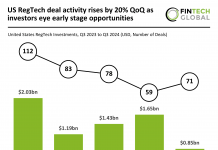In today’s digitally-dominated era, the benefits of swift and easy electronic transactions have become deeply ingrained in our daily activities. The simplicity of online shopping, card payments at dining outlets, and instant stock trading via our mobile devices epitomises modern financial convenience.
However, parallel to these advancements, the ghostly menace of intricate financial crimes, including ‘skimming,’ looms, casting a sombre shadow over the reliability of our financial networks. Skimming operates as a silent, deleterious entity, covertly infiltrating our financial data during legitimate transactions, frequently remaining undetected until the havoc it wreaks becomes palpably evident.
RegTech company Flagright recently took a deep dive into what skimming is and how firms can protect themselves.
Exploring the various forms of skimming
This illicit act can manifest in various forms, such as sales skimming, where employees pocket cash from customer payments without recording the sale. Another manifestation is receivables skimming, involving the interception of payments meant to settle business invoices, and thus never reaching the destined recipient. Then, there is credit card skimming, which is notoriously executed by deploying discrete devices, known as skimmers, to illicitly capture and store card data from ATMs, point-of-sale terminals, and gas pumps, often leaving victims unwittingly ensnared in financial turmoil.
The mechanics and prevalence of skimming
The art of skimming is far from arbitrary; it’s a methodical strategy, carefully crafted to understand and exploit the nuances of electronic transactions. Its mechanics can be distilled into four main phases: the capture, retrieval, cloning, and exploitation of financial data. Skimming can be prevalently observed across various contexts such as brick-and-mortar stores, online transactions, ATMs and gas stations, and public payment terminals, each representing a fertile ground for data interception and financial disruption.
A guide to countering skimming threats
To safeguard against the treacherous web of skimming, a multifaceted approach is imperative, encompassing technological safeguards, awareness, adherence to best practices, and sustained vigilance. A thorough understanding and meticulous compliance with evolving regulatory frameworks, designed by governments and international bodies, emerge as pivotal in enhancing the security of financial transactions and shielding consumer data from skimming threats.
Concluding insights and forward path
Venturing through the intricate network of skimming methodologies and comprehending its broad impacts underscores the crucial need to bolster financial defences. With the continuous metamorphosis of such threats, adopting a proactive, technology-integrated approach, complemented by stringent compliance to emerging regulations, becomes paramount.
As illustrated in our preceding article concerning Australia’s AML/CTF Act, collective global efforts are galvanizing towards curating a more secure, transparent financial ecosystem. The responsibility to remain informed, alert, and collaborative in confronting these challenges falls upon businesses, regulators, and consumers alike, aiming to preserve the integrity of every transaction and uphold the trust anchored in the financial world.
Read the story here.
Keep up with all the latest FinTech news here
Copyright © 2023 FinTech Global











